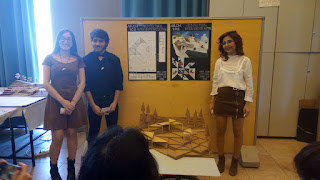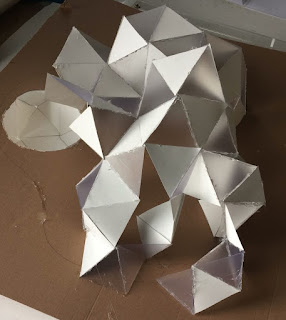Being a group assignment again, in this assignment, the students were to design an intervention in a certain inclined topography in Eymir, whose boundaries and quotes were provided. The intervention was made for the rowing club of METU, thus, it was supposed to cover certain spaces that serve to activities such as meeting, exercising, resting, eating and storing (the boats). My group members were;
Emel Uçak
and Aytül İlge Genç.
 |
| First model |
Being our initial model, we chose the method of weaving. We aimed to create the spaces given above, without really touching the topography, being our major mistake.
Also, the structure we used on the roof was not to be used in the ground, unless the weaving starts in the roof and continues to move on the wall structures.
 |
| Second model |
In the second model, our main concern was touching the topography. We thought that we were able to do so, but according to the critics we've received, it was not a sufficient intervention to topography.
Thus, we decided to plan the topography from the beginning.
 |
| Third model (topography) |
This time, we started with the design of the topography, and continued with the structure. The primary elements we've decided to use was triangles, as can be seen.
 |
| Third model (structure) |
Our model was said to lack references, having a crowded and chaotic topography. Also, we changed our method from weaving to framing, as weaving was far from a realistic approach.
 |
| Fourth model (topography) |
In the fourth model, our main concerns were references and a clean topography. Thus, we worked with consistent angles and elements that are either repeated or scaled and repeated. This topography was criticised in a good way, making all three of us smile victoriously towards our design.


















